At the core of the Solar System lies the magnificent Sun, which reigns as the largest entity. Boasting 99.8% of the solar system’s mass, it dwarfs the Earth with a diameter that is approximately 109 times greater – an astonishing fact that allows for a million Earths to be comfortably accommodated within its fiery embrace.

The Sun’s surface has an approximate temperature of 5,500 degrees Celsius, while its core reaches temperatures exceeding 5 million C as a result of nuclear reactions. NASA estimates that it would require detonating 100 billion tons of dynamite every second to generate the same amount of energy produced by our star.
What is the origin of the Sun?
The Sun’s origin dates back approximately 4.6 billion years ago. Scientists hypothesize that the Sun, along with the rest of the solar system, emerged from a massive swirling cloud of gas and dust called the Solar Nebula. As gravity caused the nebula to collapse, it began to spin faster and flatten into a disk shape. The majority of the matter within the nebula was drawn towards the center, giving rise to the formation of the Sun. Presently, the Sun possesses enough nuclear fuel to sustain its current state for another 5 billion years. After this period, it will expand and transform into a red giant. Eventually, it will shed its outer layers and the remaining core will collapse, resulting in the formation of a white dwarf. Gradually, the white dwarf will fade away and enter its final stage as a faint, cold hypothetical entity, commonly referred to as a black dwarf.
The structure and atmosphere of the Sun in detail
The Sun is composed of various zones and layers, each with its own distinct characteristics. Internally, it comprises the core, the radiation zone, and the convective zone. Moving towards the outer regions, we encounter the photosphere, chromosphere, transition region, and finally the corona. Beyond the corona lies the solar wind, a continuous stream of gas emanating from the Sun.
The Sun’s core, which extends about a quarter of the way to its surface from the center, is only 2% of its volume but has a density nearly 15 times that of lead and contains almost half of its mass. Following the core is the radiation zone, which accounts for 32% of the Sun’s volume and 48% of its mass, extending up to 70% of the way to the surface. In this zone, light from the core is scattered, resulting in a journey of a million years for a single photon to pass through.
The convection zone extends to the Sun’s surface and constitutes 66% of its volume but only a little over 2% of its mass. This region is characterized by active “convection cells” of gas. There are two primary types of solar convection cells – granulation cells, which are approximately 1,000 kilometers wide, and supergranulation cells, which have a diameter of about 30,000 kilometers. The photosphere, the outermost layer of the Sun’s atmosphere that emits visible light, is approximately 500 kilometers thick, with the majority of the light originating from its lower third. Temperatures in the photosphere range from 6,125 C at the bottom to 4,125 C at the top. Beyond the photosphere lies the chromosphere, which is even hotter, reaching temperatures of up to 19,725 C, and appears to consist entirely of pointed structures called spicules, which can reach heights of about 10,000 km.
The Magnetic Field of the Sun
The magnetic field of the Sun is typically twice as powerful as the magnetic field of Earth. However, it is highly concentrated in specific regions, where it can reach up to 3,000 times its normal strength. These variations in the magnetic field occur due to the Sun’s differential rotation, with the equator rotating faster than higher latitudes and the interior rotating faster than the surface.
These irregularities give rise to various phenomena, including sunspots and dramatic events like flares and coronal mass ejections. Flares are the most intense outbursts in the solar system, while coronal mass ejections involve large amounts of matter being expelled. A single ejection can release around 20 billion tons (18 billion metric tons) of material into space.
Solar Cycles and Sunspots
Sunspots, which are typically circular formations on the Sun’s surface, are areas that are cooler and darker compared to the surrounding areas. These formations occur when magnetic field lines from within the Sun break through its surface. The number of sunspots varies with the Sun’s magnetic activity, following a pattern known as the solar cycle. This cycle spans approximately 11 years, starting from a minimum of zero sunspots and reaching a maximum of around 250 sunspots or sunspot clusters before returning to a minimum. Towards the end of the cycle, the magnetic field undergoes a rapid reversal in polarity.
TechInsider Network Edition
Founder of the “Fashion Press” LLC: 119435, Moscow, Bolshoi Savvinsky per. 12, str. 6, floor 3, room II;
Editorial office address: 119435, Moscow, Bolshoi Savvinsky per. 12, p. 6, str. 6, floor 3, room II; Editorial office address: 119435, Moscow, Bolshoi Savvinsky per. 6, floor 3, room II;
Editor-in-Chief: Nikita Vasilenok
Editorial office e-mail address: [email protected]
Editorial office phone number: +7 (495) 252-09-99
Information product label: 16+
The network edition is registered by the Federal Service for Supervision in the Sphere of Communications, Information Technologies and Mass Media, registration number and date of decision on registration: series EL No. FS 77 – 84123 dated November 09, 2022.
© 2007 – 2023 "Fashion Press" Ltd.
By uploading content onto the Website, the User gives "Fashion Press" LLC the right to use, reproduce, distribute, modify, and publicly display the content without any cost.
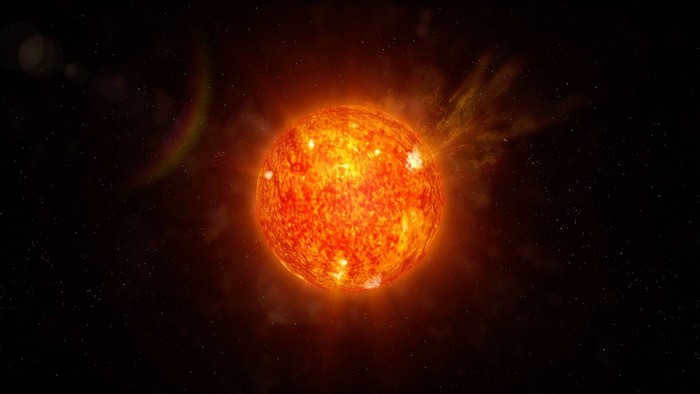
The vast expanse of space remains largely unexplored, with scientists estimating that only 10% of its mysteries have been uncovered. Within this vastness lies an abundance of enigmas, leaving us to ponder the existence of countless galaxies, planets, and civilizations that may inhabit them.
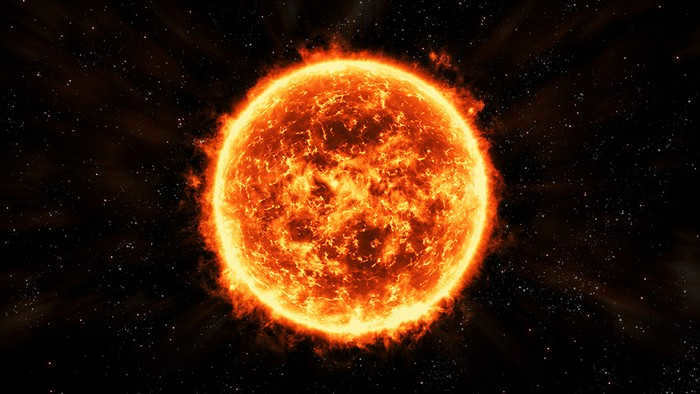
The Sun, which is the biggest star in our galaxy, is still considered a dwarf star when compared to other stars.
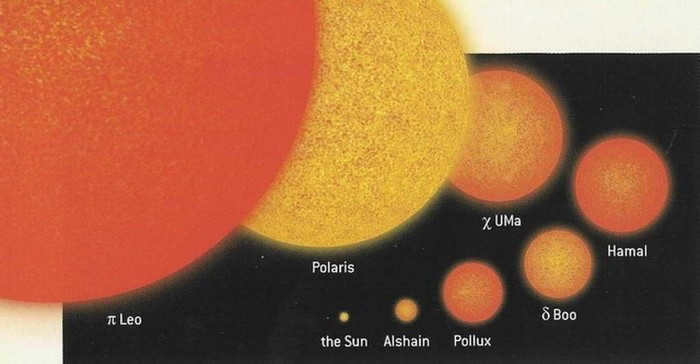
The arrangement of the solar system ensures that each planet receives a certain degree of illumination from the central star. The distance between our planet and the star is 149,597,870,700 meters.
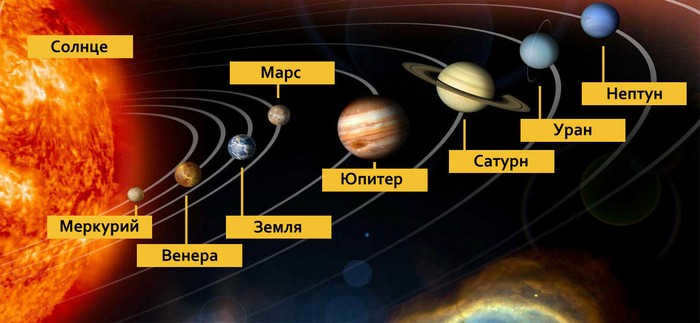
One may wonder, what is the exact temperature at the core of the sun, considering that it emits heat over such vast distances and continues to disperse it even further away? Additionally, how did scientists determine the sun’s surface temperature in both Celsius and Fahrenheit?

The Core of the Sun
Located at the very center, the core of the Sun is an extremely dense sphere. With a radius measuring 1,300 kilometers, it constitutes only a small portion of the Sun’s overall diameter. Interestingly, the core is just 30% smaller than the moon.
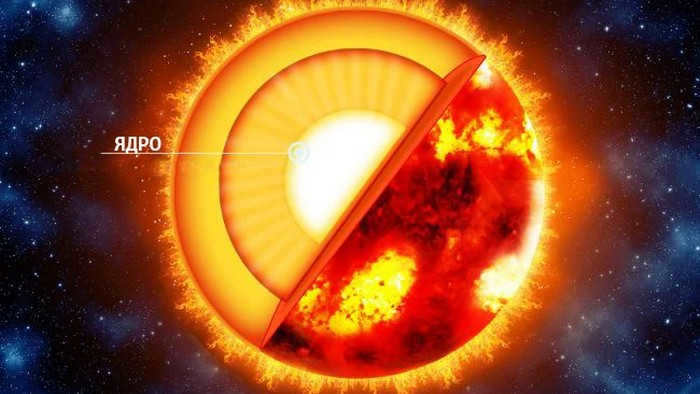
Due to its position inside the fiery sphere, the core remains concealed from view. Each celestial body, including our very own planet Earth, possesses a central core, yet accessing it proves utterly unattainable.
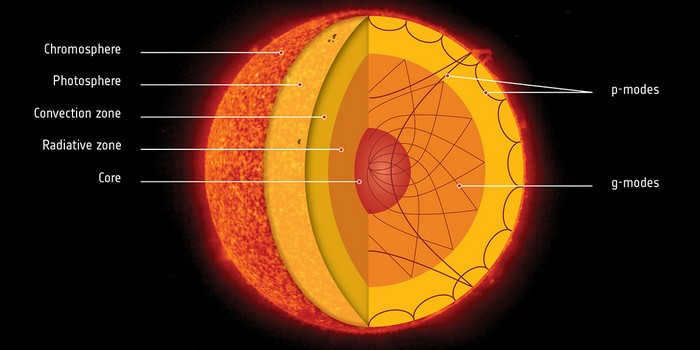
The calculations of the size are determined using seismology. Unobservable electrical waves circulate throughout the entire planet. And scientists who study earthquakes have detected and analyzed the reverberations of these tremors in various regions of the world. This led to the development of the concept of the S-wave. However, these waves did not extend beyond the Earth’s surface, as they simply vanished. It was discovered that S-waves can only travel through solid materials, indicating the presence of a liquid substance within the Sun.
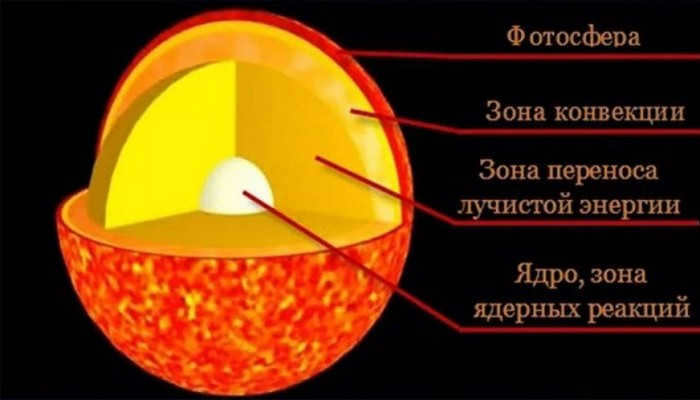
For a long time, researchers have been studying the impact of gravity on the surface of the Earth. It has been noted that the deeper you go, the more difficult it becomes. According to theories, the core of the sun is primarily composed of iron, a chemical element known for its weightiness. Over millions of years, this heavy element has gradually seeped into the sun’s interior, accumulating in its central region.
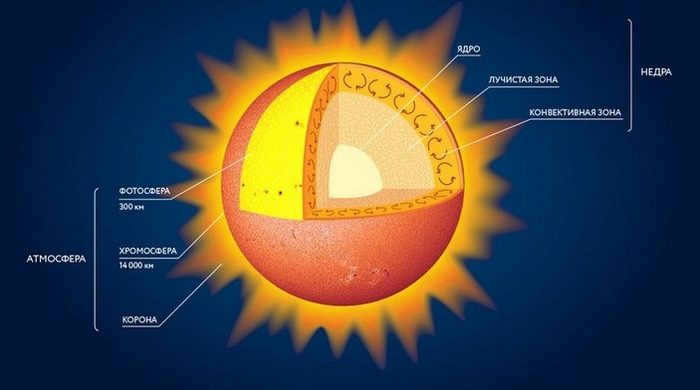
Frequently, individuals inquire: what is the degree of warmth of the Sun? The temperature within the sun is 15,000,000 kelvin. That is an enormous value. Converting it into regular values, it amounts to 13,599,726 degrees Celsius. The value exists, but how was the temperature of the Sun’s core computed?
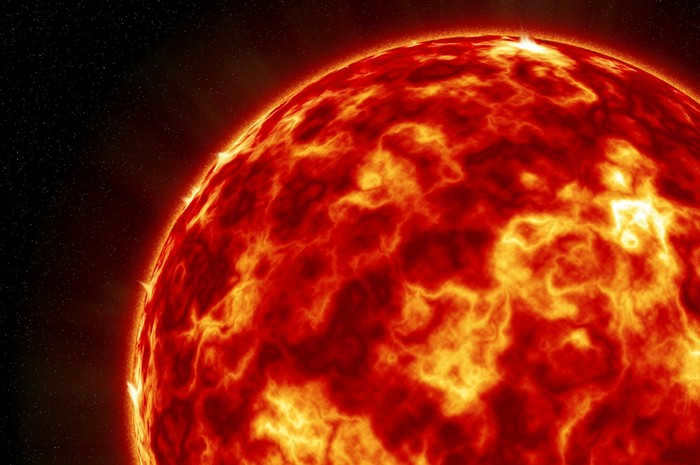
In 2013, an experiment was conducted by French scientists where pure iron was subjected to high-pressure conditions in order to determine the temperature through various reactions. The interesting discovery came in 2015 when it was revealed that sulfur makes up 90% of the core’s overall composition.
Convective region
Following the core, the region of radiative transfer commences. At the conclusion of this boundary, the temperature plummets to 2,000,000 degrees Celsius. The density likewise diminishes, albeit gradually. Right above the region of radiative transfer, the convective section commences.
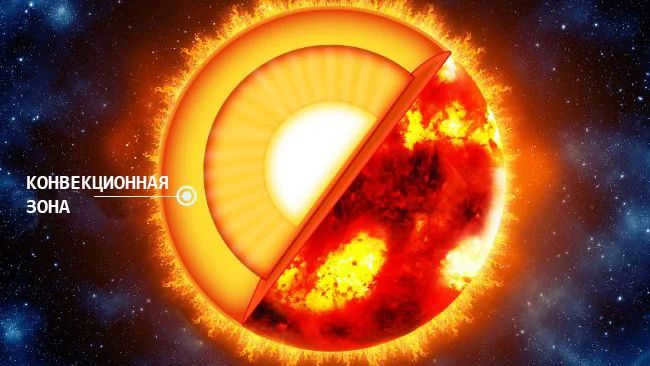
The transfer of energy in the sun occurs through convection, where heat is transferred through the movement of jets and streams.
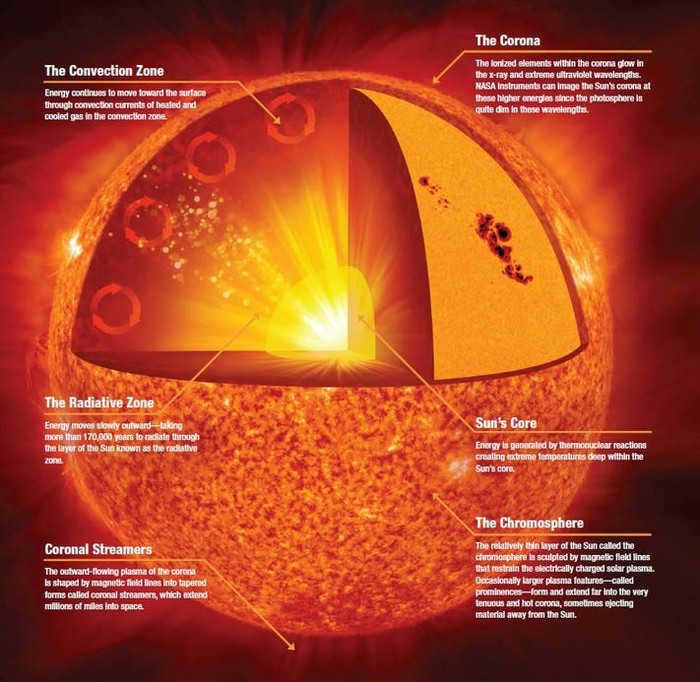
There is an additional concept known as the “convection phenomenon” in which photons undergo an energy loss as a result of collisions. To put it simply, the entirety of the energy flow progresses along this boundary in the form of granules, with bright flashes moving rapidly towards the upper regions of the complete solar section.
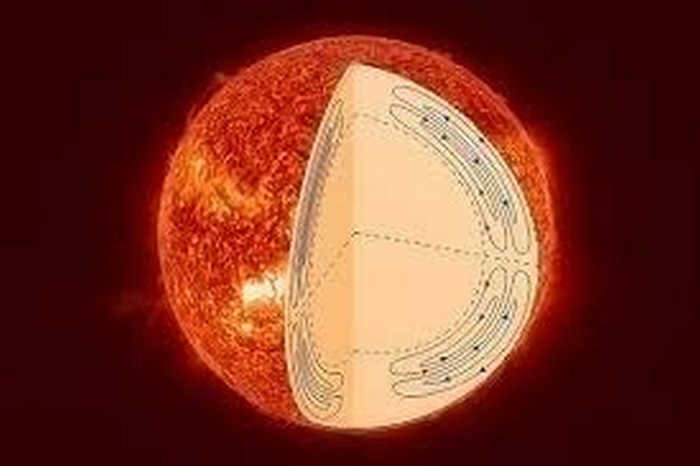
Everyone has witnessed this phenomenon when gazing at a luminous star and observing the dynamic movement of its granular structure. The mesmerizing display is a result of the collision and dispersion of granules caused by convection, which distributes the dense carbon dioxide. As the granules cool down, they are drawn back into the core of the heart board.
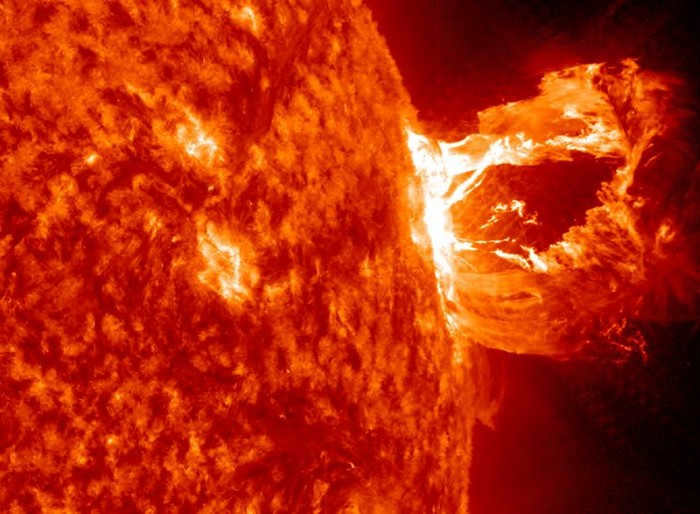
The phenomenon known as the Doppler effect is still at play here, where waves moving away from the source experience an increase in frequency. This effect can also be observed in the case of granules. As they move away from the core, their size gradually increases until they eventually burst at the surface. This is due to the fact that the temperature on the surface of the sun is higher than that of its inner layers, excluding the core.
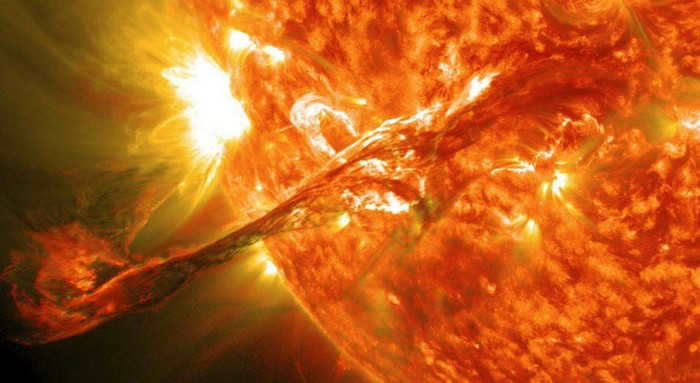
The temperature of this section decreases from 7 to 2 million degrees Celsius.
The photosphere
The photosphere exhibits the same radiant white light that is observed in the atmosphere. However, it is situated within the fiery orb. Its width is relatively narrow, measuring only 100 kilometers.
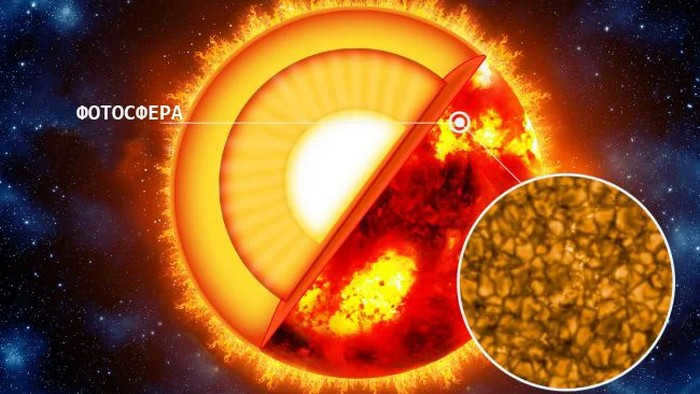
Certainly, this magnitude is significant, but for a massive Sun, it is a minuscule unit of measurement. This region obstructs the complete observation of the star’s internal radiance. The temperature, in Celsius degrees, amounts to 5,726. The photosphere displays an exceedingly irregular coloration.
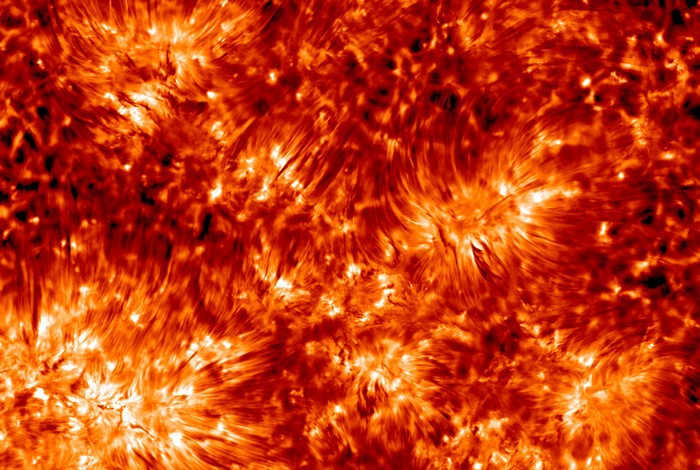
The primary function of the Photosphere is to absorb radiation from the sun. This process occurs as the sun’s core undergoes nuclear fusion, transforming hydrogen into helium.
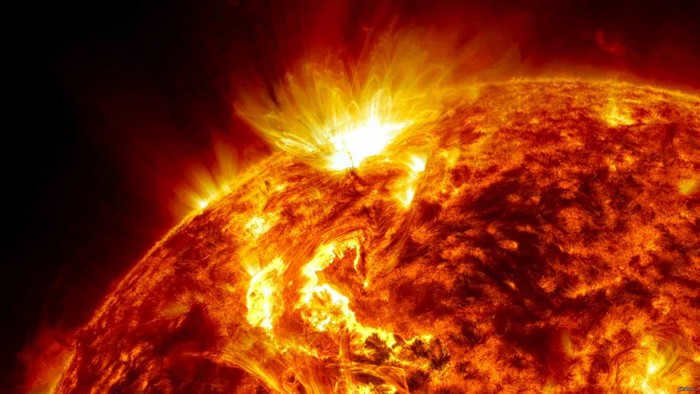
The structure of the photosphere is diverse. It consists of granules that are created when the luminous plasma rises and then descends.
Hromosphere
The Hromosphere can be found directly above the photosphere. In comparison to other components within the fiery sphere, it is relatively slender. This region serves as the launching pad for photons as they are propelled into the boundless expanse of space.
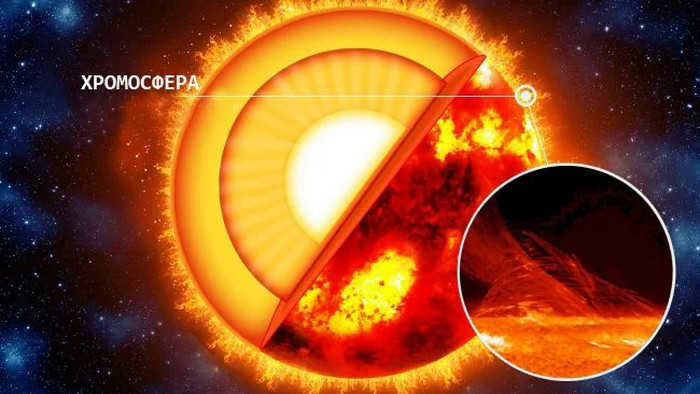
The sun has an average temperature of 5,800 K, equivalent to 5,526.85 degrees Celsius. The chromosphere, being further away from the central core than the photosphere, is hotter than the photosphere.
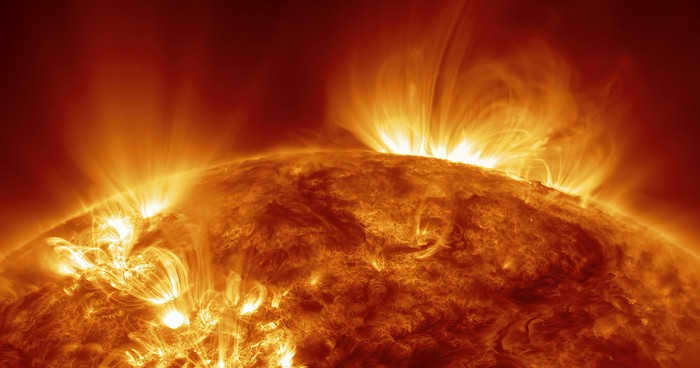
Due to its vibrant violet-red hue, this region is quite elusive when viewed from space. Only during a complete solar eclipse have scientists been able to observe it.
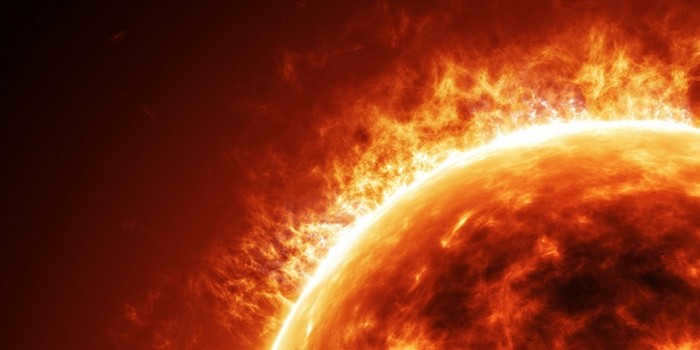
The main component present in Hromosfera is spicules, which are brightly glowing plasmas. Unlike the Sun, which lacks a solid outer shell, its last zones extend beyond and surround the star. These spicules can be likened to pillars or grass-like structures.
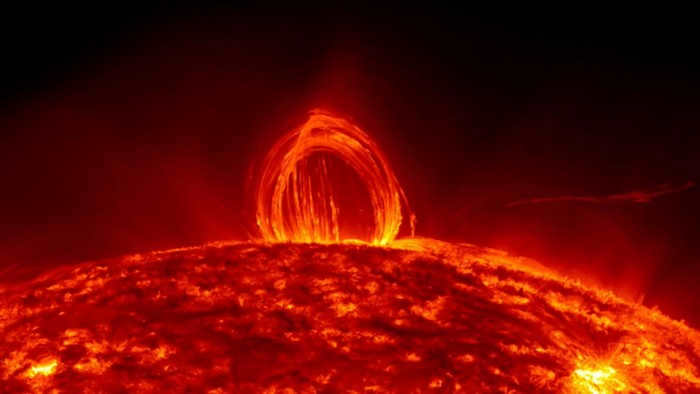
Their point of origin lies within this region and swiftly transition into the subsequent segment known as the corona. In this area, they gather and intensify in temperature before being propelled into outer space, similar to a fountain. These spicules have a relatively short lifespan of no more than 10 minutes. Once they are ejected into the expansive void of space, they become highly noticeable.
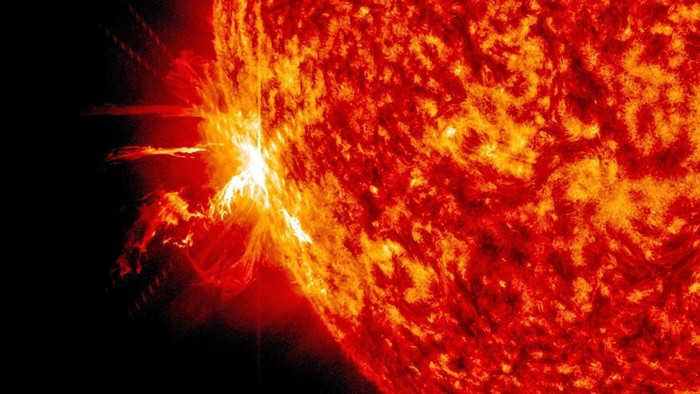
Sun’s Corona
The sun’s corona is the outermost layer of the sun that extends into the solar wind. It is a region that lies between the surface of the sun and the outer reaches of the solar system.
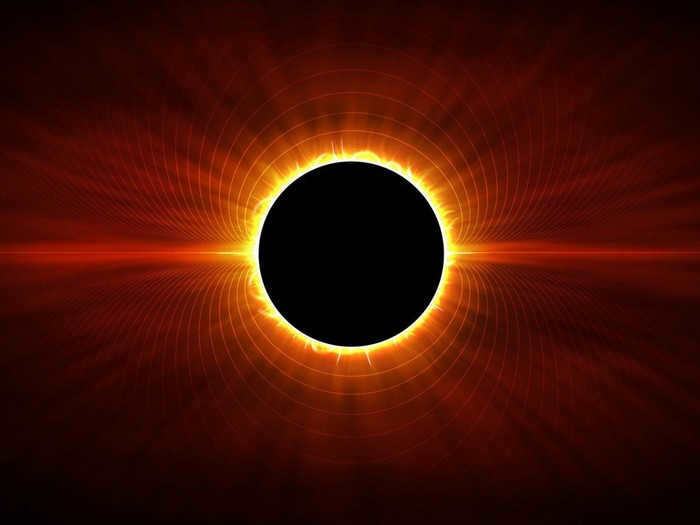
The sun is not a solid sphere, but rather a collection of electrically charged particles and their surrounding fields. Additionally, KORONA refers to the material that forms the atmosphere extending across our galaxy.
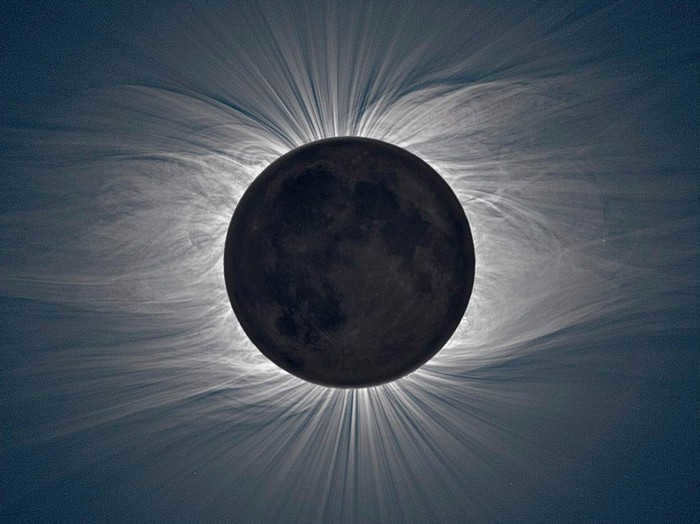
The solar wind is the continuous flow of particles that occupies the space between all the planets.
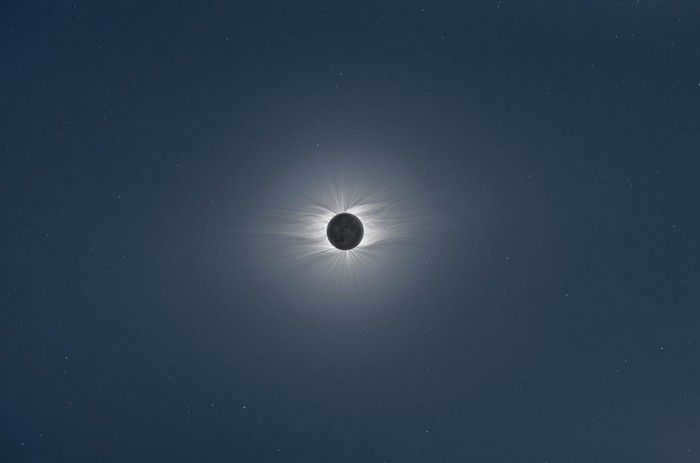
Prior to this discovery, researchers were aware of the rotation of this region and the existence of a visible layer beneath it. However, the transition point between the corona and the directional solar wind, which eventually reaches Earth, had not been identified.
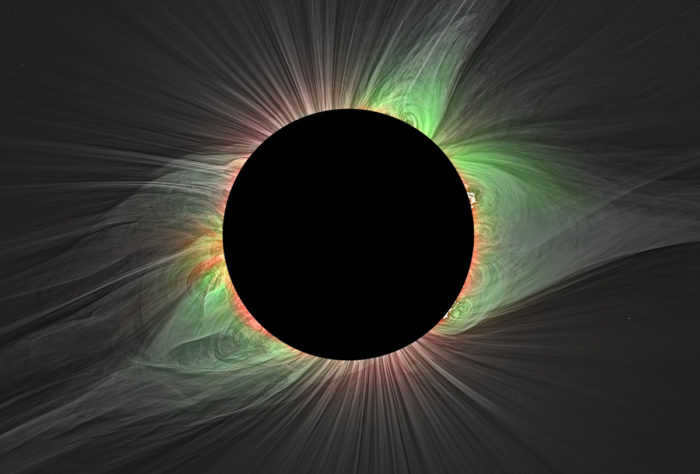
The temperature of this section of the fiery star amounts to 5,526 degrees Celsius. Currently, it remains uncertain what causes the solar corona to heat up and propels the solar wind to such high velocities, enabling it to traverse vast distances spanning thousands and millions of light years.
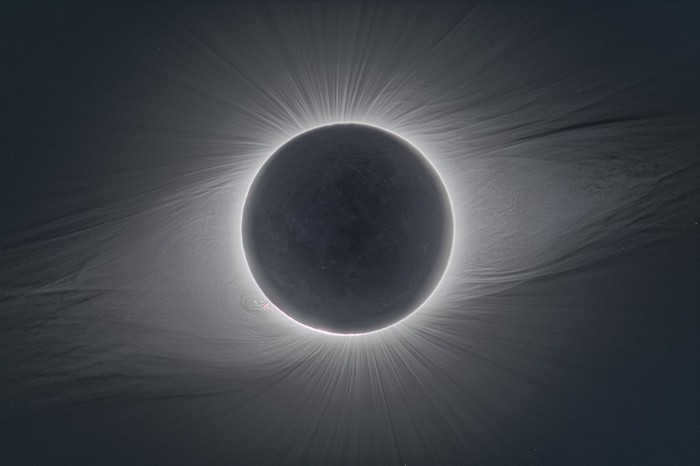
Its upper part is significantly hotter than the radiant surface below. For instance, if we consider a fire as an analogy, the further away you are, the less you perceive the heat emanating from it. However, in this case, it is the opposite. This phenomenon presents one of the most intriguing enigmas. The Corona effectively conducts heat, and once a substantial amount accumulates in a particular region, it rapidly dissipates. It resembles the eruption of lava from a volcano as it forcefully ascends.
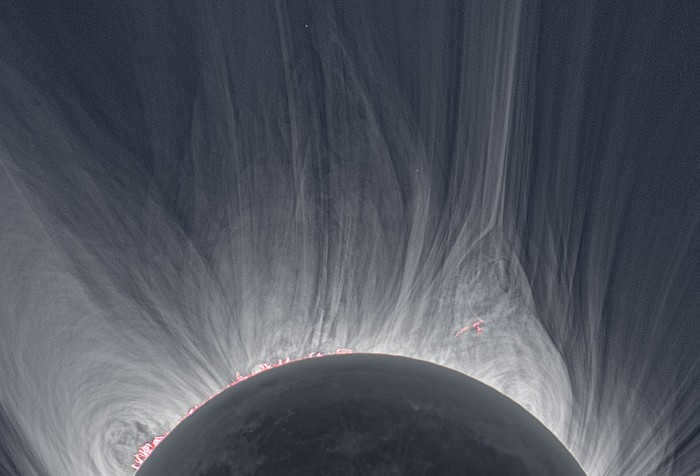
The Parker probe has provided people with all this information, as it flew very close to the enormous star.
The significance of solar energy
Once we discover the temperature on the sun’s surface, we may question the purpose of solar energy. Our sun emits solar energy, which falls within the visible light range according to the laws of physics. This energy is distributed at a constant rate of one and a half kilowatts per square meter. Naturally, individuals strive to harness this powerful stream.
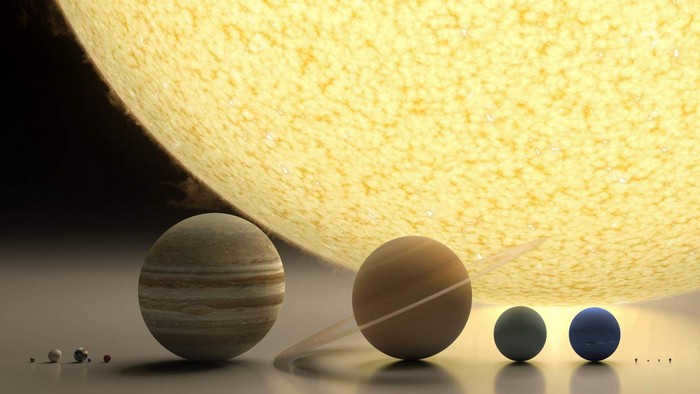
Initially, the sun’s energy is directed towards power plants, albeit in smaller quantities compared to nuclear power plants. As a result, its utilization on a grand scale is still limited. Solar power plants function optimally only in regions with abundant sunshine, which is not the case worldwide. This has led to the concept of placing power plants in space, where it is feasible to generate a full 1.5 kilowatts of power.

Our planet’s coal, oil, and gas reserves, which are essential for our modern way of life, were formed by the immense energy of a blazing star.
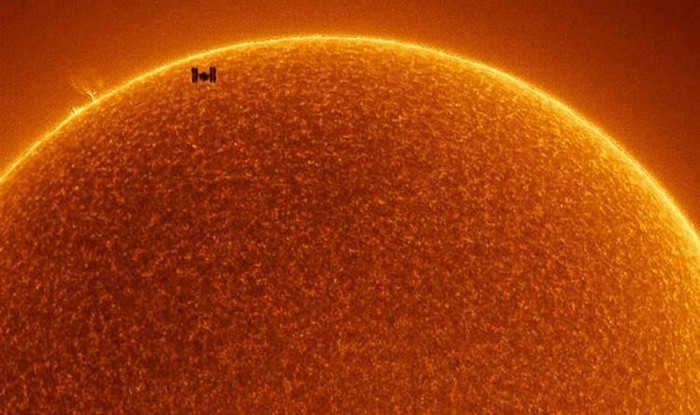
The soil climate is responsible for creating favorable conditions of heat and temperature. This unique combination allows for the cultivation of various crops in different regions of the world, as well as the coexistence of diverse animal and human populations across different continents and natural zones. The climate patterns were originally designed to ensure that each area receives the specific temperature required for its unique ecosystem.

The energy expended in the creation of the moisture cycle in the atmosphere and the redistribution of heat is also facilitated by the rotation of the Earth. As the Earth revolves around itself, different sides are illuminated and exposed to the sun’s rays, leading to variations in temperature and weather patterns throughout the seasons.
In summary, solar power is the origin of life on Earth. It is from solar energy that all living organisms on our planet derive the ability to grow and reproduce.
It is not commonly believed that the sun is simply a typical star. We are accustomed to seeing stars in the sky each day – tiny dots emitting cold and dim light, whereas the Sun’s light is fundamentally distinct from them.
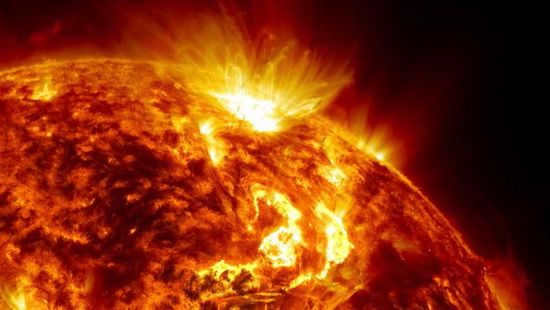
However, it’s important to keep in mind that the distance between the Earth and the nearest star after the Sun is 150,000 times greater than the distance between the Earth and the Sun itself. The Sun and other stars share a similar nature, as they are composed of a cluster of luminous gases.
What is the temperature of the Sun’s surface? Scientists estimate that the surface temperature of the Sun is approximately 6,000 degrees Celsius.
To help visualize this, let’s consider that a white-hot piece of iron has a temperature of around 1430 degrees Celsius.
If one were to venture further into the celestial luminary, the temperature would skyrocket to approximately 20,000,000 degrees. Naturally, this is a mere estimation. Humanity’s understanding of the Sun’s internal composition is still quite limited. Even the most advanced instruments, designed to aid space exploration, are unable to fully unveil the enigma surrounding the Sun’s core, which remains concealed beneath four layers of gaseous material.
Solar eclipses are extremely infrequent occurrences


The Sun never illuminates the dark side of the Moon.

The Earth has a spherical shape.
The temperature on the surface of the Sun is approximately +5500C, while the temperature of its corona is +2 million C. However, it is quite unusual. Let me show you the second star in the Universe with a corona temperature 360 times higher than its surface temperature. Based on these characteristics, the Sun appears to resemble an artificial induction generator rather than a “traditional” star. In most stars, the temperature decreases as you move away from the surface, but in the case of the Sun, it actually increases up to 70 thousand kilometers from the surface before starting to decrease.
My hypotheses.
The Sun undergoes a burning process starting from its outer layers and progressing towards its core,
At some point in time, the Sun originated from a gas-dust cloud with a temperature very close to absolute zero, which is the temperature of the surrounding space.
Logs in a furnace burn from the surface towards the center. The center of the logs remains cold for a significant amount of time, even though they are already burning from the top. Imagine the Sun as if it were burning inside a cosmic furnace – a log with a radius of 700,000 kilometers. The initial temperature of this log is close to absolute zero. It is not an easy task to remove the cold from the core of the Sun. Firstly, the fire itself, which covers the entire surface of the Sun, acts as a thermos. I want to emphasize that the fire surrounding the Sun acts as an insulator, preventing the cold from escaping the Sun’s core. Currently, there is a process of heating the cosmic “log” from the outer layers towards the core. Sunspots, which are 1000 degrees colder than the surrounding surface, indicate that the cold is being expelled from the Sun’s depths. Where does the cold on the Sun come from?! The “log” is gradually burning, and as it heats up, the cold is expelled as the fire progresses. Energy emissions from the interior of the Sun indicate that another layer has been heated, that the fire has reached a new source of fuel. It can be speculated that the Sun is heated to a depth of 2,000-300,000 kilometers, but the core itself is still cold.
The sun’s core is a place of tremendous gravitational pull and extreme temperatures, reaching up to 15 million degrees Celsius. Within this intense environment, hydrogen atoms are compressed and undergo a process known as thermonuclear fusion, combining to form helium.
Forgive me, but this is a far cry from a simple log.
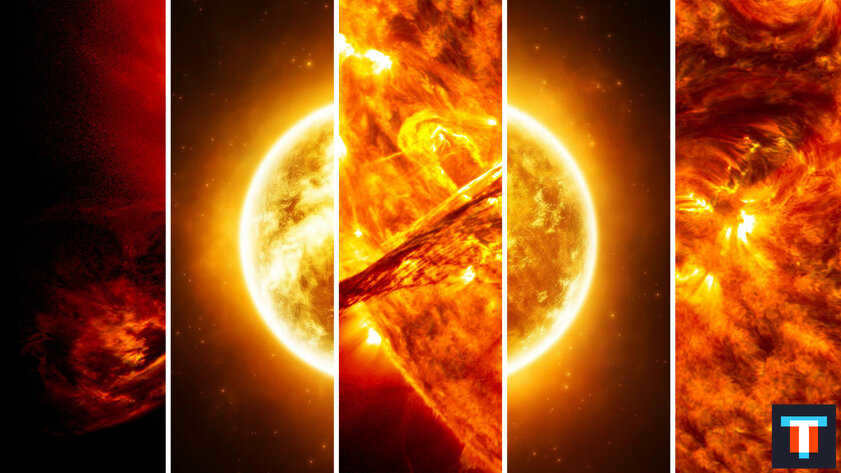

Life on Earth would not be possible without the Sun. However, the star itself does not have the necessary conditions for the formation of life as we know it. This is mainly due to its extremely high temperature, which is not suitable for organic organisms. But how hot is the Sun? This question does not have a straightforward answer, as it depends on the specific point at which the temperature is measured. According to NASA, the temperature at the core can reach approximately 15,000,000 °C, while the surface is much cooler at around 5,500 °C. That is the difference.
What Makes the Sun Extremely Hot
The Sun consists of a combination of gas and plasma, with 92% of the gas being hydrogen. If the size of the star were smaller, it would still be a relatively large but unremarkable sphere, similar to Jupiter. According to information from NASA, the hydrogen in the solar core is held together by an incredibly powerful gravitational force. This force creates such high levels of pressure that when the hydrogen atoms collide, they fuse together to form helium. This process, known as nuclear fusion, generates a continuous build-up of energy, leading to the Sun reaching temperatures in the millions of degrees. Consequently, this energy is then released outward, resulting in the heating of the star’s surface and its surrounding objects.
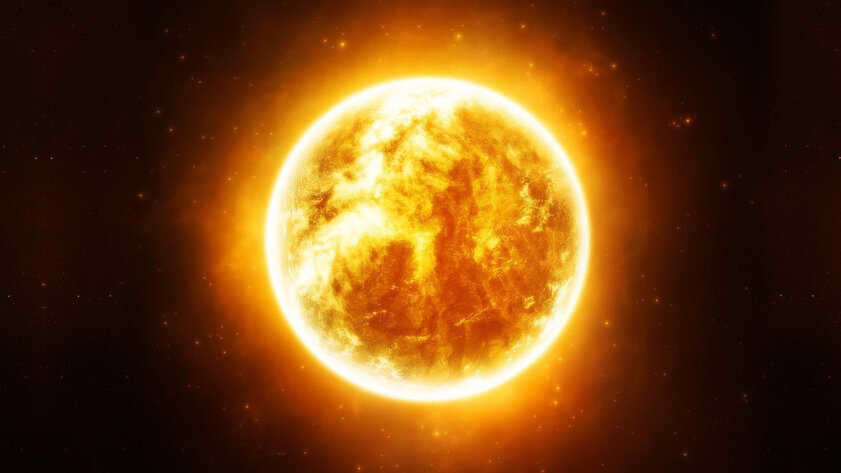
There are numerous temperature fluctuations observed on the Sun, and a significant number of these phenomena remain unexplained by scientists.
As the Sun is approached, the temperature becomes extremely hot.
According to the educational portal Study, there exists a radiation zone surrounding the Sun’s core, where temperatures range from 7,000,000 °C in close proximity to the Sun to 2,000,000 °C in the outer regions. Phys suggests that traditional thermal convection does not occur in this area. Instead, heat is transferred via thermal radiation, causing the emission of photons by hydrogen and helium atoms. These photons travel a short distance before being absorbed by other ions. Due to their lightness, it can take thousands of years for the photons to traverse this layer and reach the Sun’s surface. This disparity in temperature between the core and the surface is a result of this process.
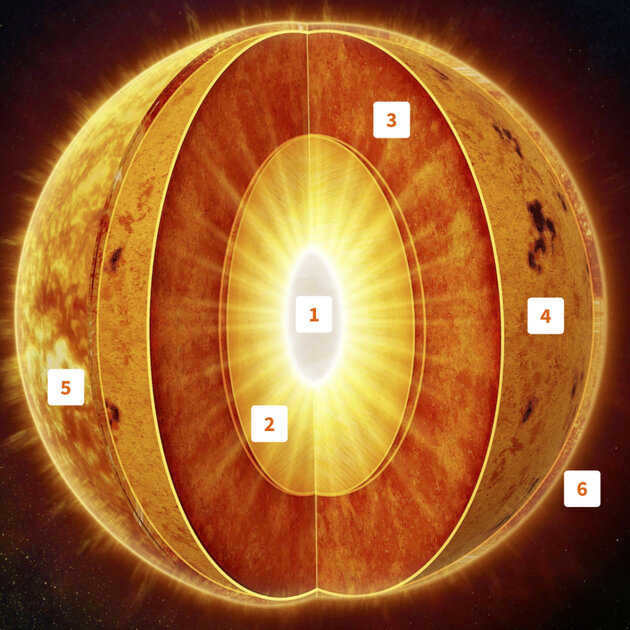

1 – nucleus, 2 – zone of radiation, 3 – zone of convection, 4 – photosphere, 5 – chromosphere, 6 – corona Space
The radiation zone is followed by the convection zone
According to research, the convection zone extends 200,000 kilometers beyond the radiation zone. The temperature in this area is approximately 200,000 °C. In this layer, plasma moves like bubbles in boiling water, transferring heat to the surface of the Sun.
The temperature variations in the solar atmosphere
Providing an exact temperature for the solar atmosphere is challenging since it is comprised of multiple layers. As stated by The Sun Today, the photosphere experiences temperatures around 5,500 °C. In this region, visible radiation is measured as solar radiation, and cooler areas appear darker due to their lower temperatures (ranging from 3,000 to 4,500 °C). Moving beyond the photosphere, we encounter the chromosphere, where temperatures span from 4,000 to 6,000 °C.
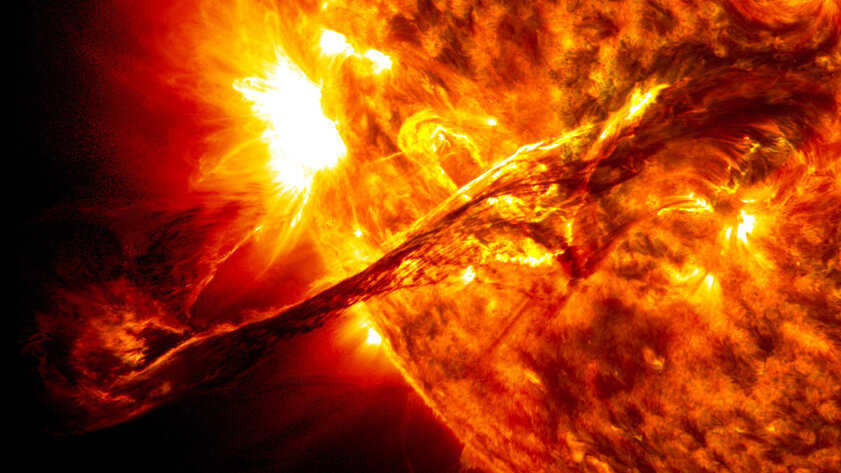

Additionally, there is the corona, the outermost layer of the solar atmosphere, which spans vast distances. It might be expected that the temperature in this region would be lower, but it is approximately 500 times hotter here compared to the photosphere – ranging from 1,000,000 to 2,000,000 °C. The origins of these figures have perplexed scientists for many years. While there are theories, they still require validation.


The entire solar system and planet Earth rely on the Sun for energy. Life on our planet would be impossible without it. Throughout history, people from different cultures and religions have worshipped the Sun as a god, recognizing its supreme power.
What exactly is the Sun? Contrary to ancient myths, we now have a wealth of scientific knowledge about this star, providing us with a comprehensive understanding of its composition, location, and the reasons for its brightness.
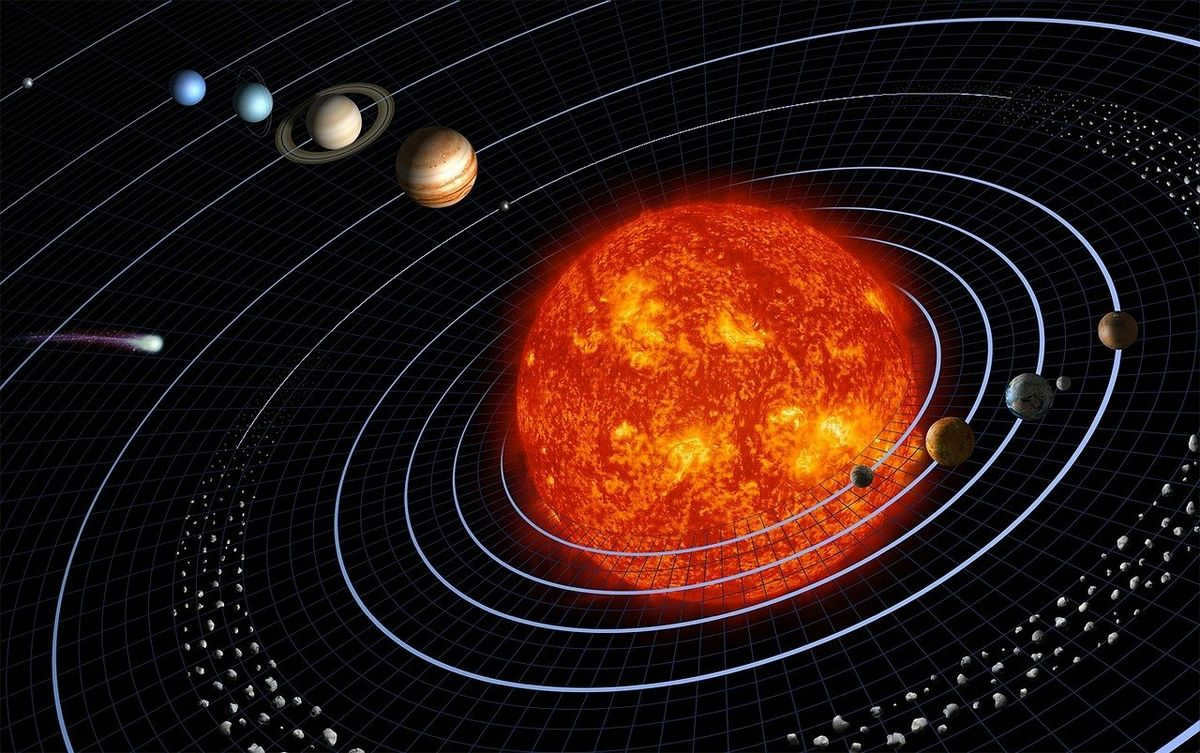
General Characteristics
The Sun has a diameter of approximately 1.4 million kilometers. It is essentially a massive sphere of hot gas. Its diameter is more than 100 times (specifically 109 times) larger than that of Earth.
The star emits light that is essentially white. However, due to the influence of Earth’s atmosphere, we perceive it as yellow, creating a visual illusion.
Within our galaxy, there are billions of other stars, and the Sun is just one of them. Its closest neighbor, Proxima Centauri, is located 4.24 light years away. To grasp the magnitude of this distance, consider that it takes only 8.32 minutes for the light from the Sun to reach Earth.
Based on scientific astronomical classification, our Sun is classified as a yellow dwarf, signifying that it is relatively smaller in size compared to other stars, yet it emits a significant amount of brightness. Furthermore, the Sun is among the top 15% of stars in our Galaxy that exhibit the highest luminosity.
The Sun generates heat through thermonuclear reactions, which then radiates from the celestial body. Within its core, hydrogen atoms undergo fusion to produce energy and helium.
Aside from its light emissions, the Sun also exerts other influences. The matter particles emitted by the star form solar wind. It is widely accepted that the gravitational force of the Sun affects the orbits of all celestial bodies within a distance of one light-year.
Around its axis, the Sun, similar to the Earth, undergoes rotations. Due to its gaseous composition, the different layers of the Sun rotate at varying speeds. Consequently, at the poles, the Sun completes one full rotation in 34 days, whereas at the equator, the speed of rotation decreases to 25 days.
Furthermore, scientists propose that the outer layer experiences a slower rotation, while the inner regions exhibit a much swifter revolution.
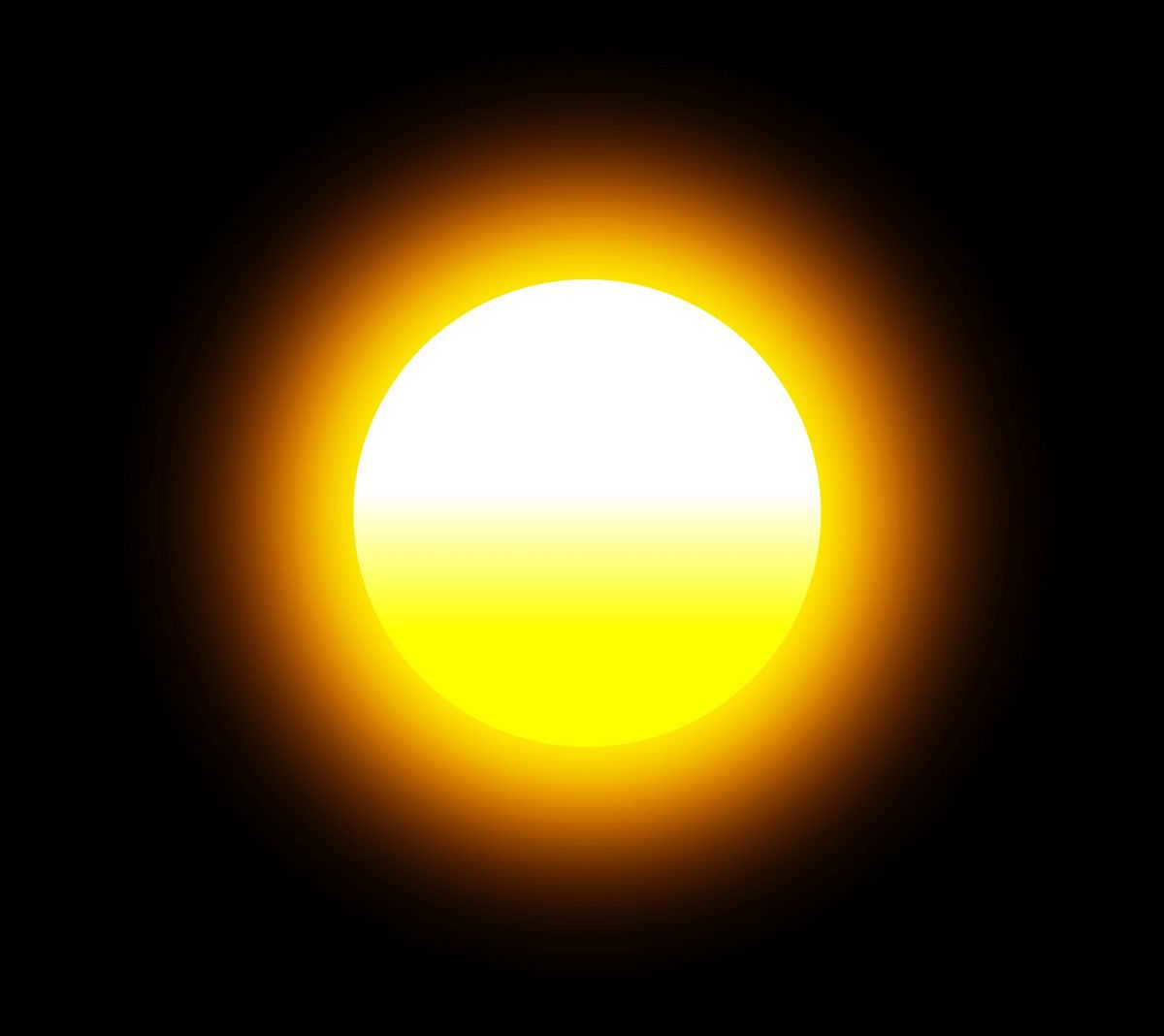

Chart showing the key attributes of the Sun:
| Indicator Name | Size |
| Weight | 1.9885*1030 kg (equivalent to over 330,000 Earth weights) |
| Equatorial Length | 4,370,000 km |
| Density | 1.409 g/m3 |
| Temperature at the Center | About 15,700 thousand degrees Celsius |
| Temperature on the Sun’s Surface | 6 thousand degrees Celsius |
| Surface Area | 6 trillion km2 |
| Rotation Period around the Axis | 34.3 days at the poles and 25.05 days at the equator |
| Distance to Earth | Maximum – 152,098.232 thousand kilometers, minimum – 147,098.29 thousand kilometers. |
Hydrogen makes up the majority of its composition, accounting for 73.5%. Helium is the second most abundant element, comprising approximately 25%. The remaining 1.5% consists of other elements.
It is not possible to definitively determine the chemical composition of the Sun, as it is constantly changing. Initially, the star was primarily composed of hydrogen. However, ongoing thermonuclear reactions convert hydrogen into helium, causing the percentage of the former to decrease and the latter to increase.
While helium also undergoes certain processes, these reactions occur at a slower rate, resulting in an inevitable increase in its content within the structure of our Sun.
The Sun’s composition
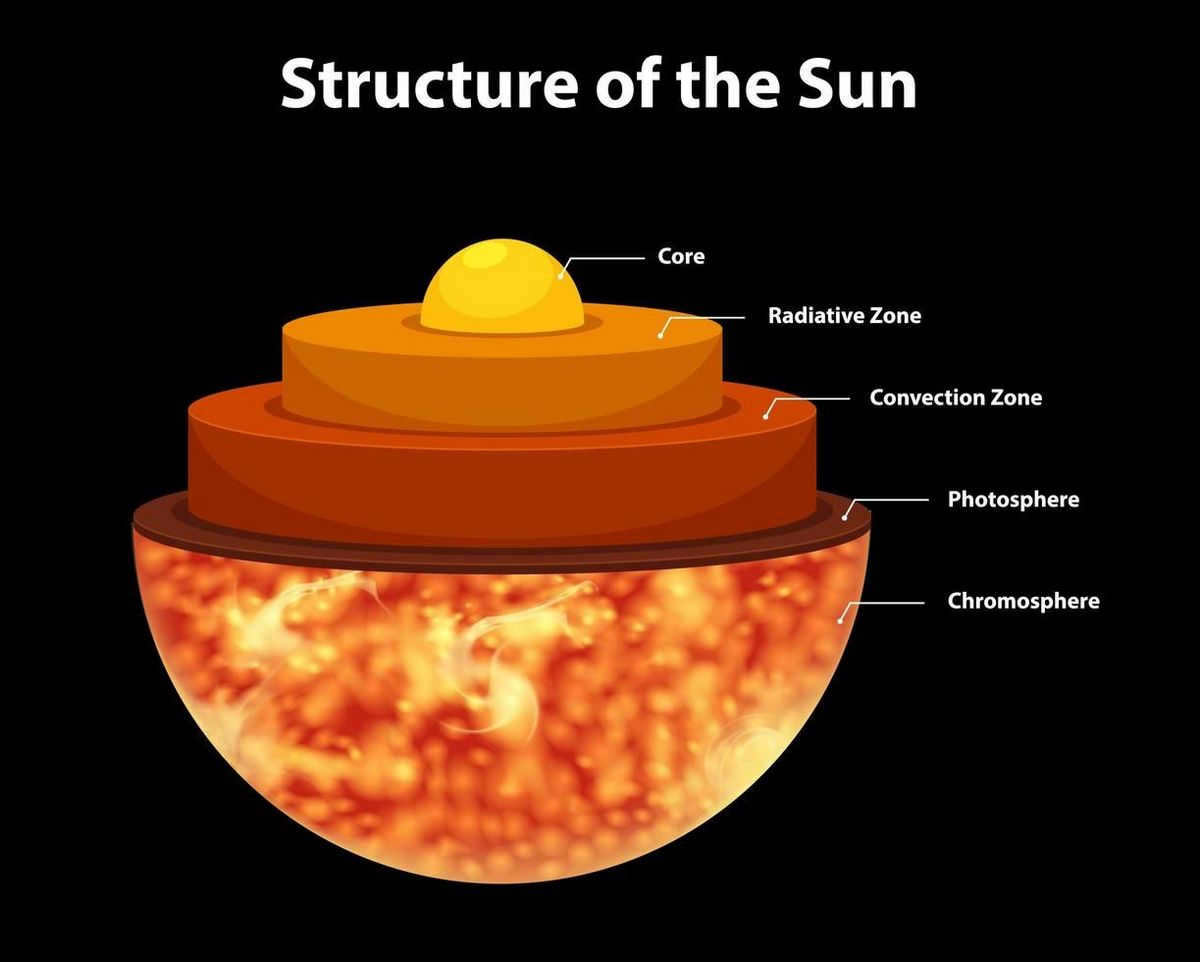
We shall examine the composition of the Sun. Due to its gaseous nature, it lacks a firm and steady surface. The majority of it is composed of an atmosphere, albeit uneven. As we move closer to the core of the star, the atmosphere becomes denser.
The Sun is comprised of six conventional strata: three comprise the atmosphere, while the remaining three constitute the inner layers.
The Sun’s inner layers
The Sun’s internal structure is comprised of three distinct zones. Let’s delve into each of them.
The Sun’s core
This is the central region of the Sun. It has a radius of approximately 150,000 kilometers and reaches temperatures exceeding 13.5 million degrees, which is beyond comprehension for the average person. Such extreme conditions result in an incredibly high density of the core’s substance. To put it into perspective, the density of gold is 7.5 times lower. These conditions allow for the occurrence of thermonuclear reactions, with the solar core being the sole source of energy production.
Radiative transfer zone
The radiative transfer zone extends up to a distance of 490,000 kilometers from the center of the core. At the boundary between the radiative transfer zone and the core, the temperature reaches a scorching 7 million degrees, while at the outer limit it cools down to around 2 million degrees.
This same pattern of temperature variation can be observed in the density of the radiative transfer zone. It gradually decreases from 20 g/cc near the core to 0.2 g/cc at the outer limit. Due to the incredibly high density, hydrogen particles are effectively immobilized, similar to the way water molecules can’t freely move when heated. Regardless of the temperature, matter remains stationary in this zone.
The region of convective transport
Following the initial 200,000 kilometers, lies the convective zone. The density of matter gradually decreases, allowing for easy mixing. Consequently, warm gases rise, cool down, and descend once again. The velocity of these gas flows can reach up to 6 km/s.
This movement of gas currents leads to the formation of a magnetic field. The temperature in this region, if measured on the Sun’s surface, drops to 6,000 degrees.
The convective zone represents the outermost layer among the Sun’s inner layers.
Atmosphere
The Sun’s atmosphere is comprised of three layers. The subsequent section will discuss the outer structure of the Sun.
Photosphere
The first layer, known as the photosphere, is located at the center of the Sun. It emits light and releases heat that warms the planets. The thickness of this layer varies, ranging from 100 to 400 km in different regions. At its outer boundary, the temperature is approximately 4700 degrees Celsius.
Chromosphere
The following layer, known as the chromosphere, spans approximately 2,000 kilometers in thickness. Despite being relatively dim, it is exceptionally challenging to observe from our vantage point on Earth. The most opportune moment to view the chromosphere is during a solar eclipse. This region possesses a distinct reddish tint and is home to fascinating structures called spicules.
Spicules are columns of plasma that erupt from the lower layers of the chromosphere. These eruptions last no longer than 10 minutes, and the spicules can extend up to 20,000 kilometers in length. It is estimated that there are approximately one million spicules present within the chromosphere at any given time.
Interestingly, the chromosphere does not adhere to the typical pattern of gradually decreasing temperatures towards its outer boundaries. Instead, it experiences a temperature increase, reaching up to 20,000 degrees at the limit of this zone.
Corona
The Sun’s corona completes the layers of the atmosphere, and its boundaries are not clearly defined. Although its density is low, its temperature can reach several million degrees.
The scientific community has yet to fully understand the reasons for this phenomenon. Within the corona, there are solar matter ejections known as prominences, which can reach heights of up to 1.6-1.8 million kilometers.
The magnetic field and its distinctions
There is a distinction made between a single global cyclic field and numerous local ones. The global field experiences fluctuations in intensity approximately every 11 years. Additionally, there are cyclic changes in the frequency of spot formation, which were discovered in the 19th century by scientist Schwabe and were subsequently named after him.
Furthermore, there are also powerful but less noticeable local fields. These local fields can have intensities that are thousands of times greater than the global field. However, their effects are only observed for a few dozen days at most. The sunspot zone is the most common location for the appearance of these local fields.
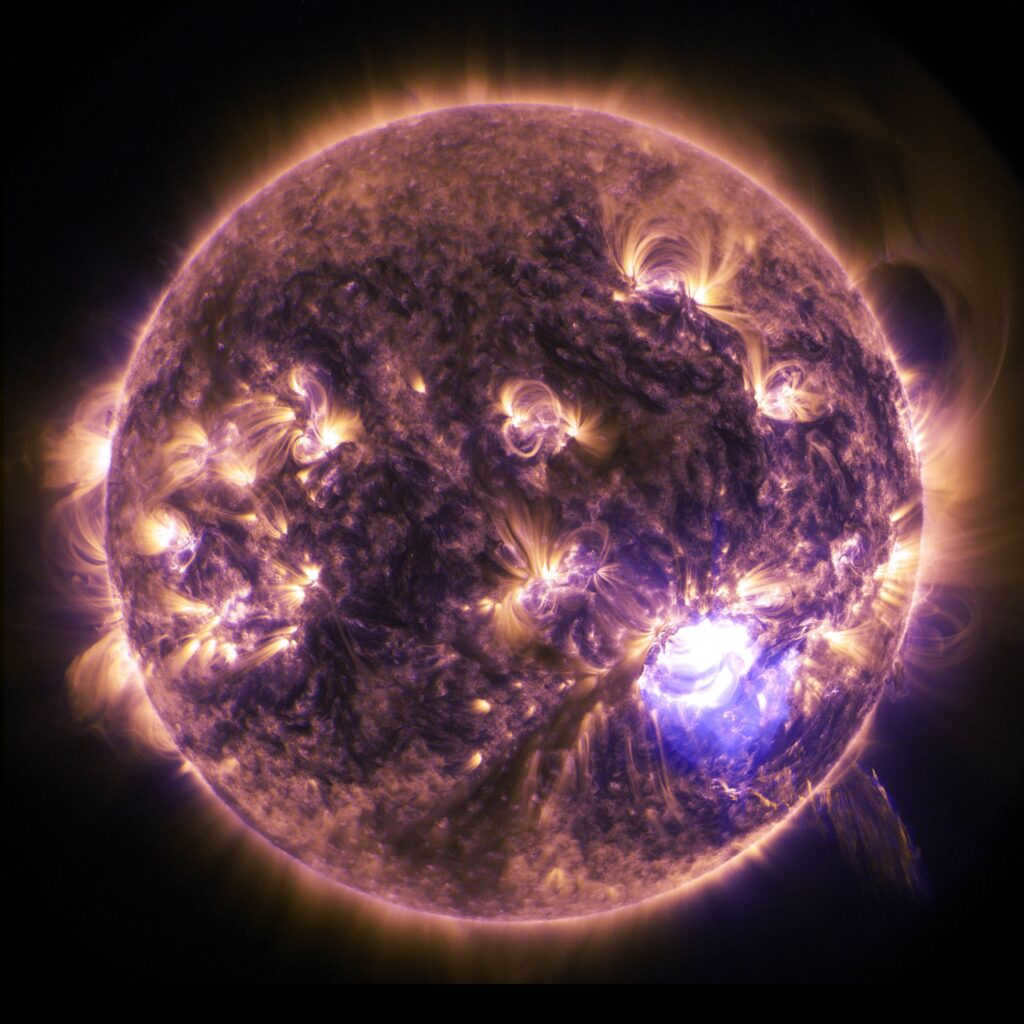
The Sun’s Life Cycle
The Sun is estimated to be around 4.5 billion years old. It originated from a gas-dust cloud that underwent gravitational compression, resulting in the formation of the Sun and various other celestial bodies. Within this cloud, certain conditions were met, leading to a thermonuclear reaction and the birth of the Sun.
As these reactions occur periodically, the Sun gradually loses mass, causing its temperature and brightness to increase over time.
In the past, Earth experienced much colder temperatures, and planets like Venus may have supported life and had water. However, due to the current temperature of over 450 degrees Celsius, such conditions are no longer possible on Venus.
The Sun’s life cycle is still ongoing, as it is currently in the middle of its evolutionary process.
The Sun’s Journey through the Milky Way Galaxy
The Milky Way Galaxy is home to our solar system, and the Sun plays a crucial role in its orbit. It takes approximately 240 million years for the entire solar system, including the Sun, to complete one rotation around the center of the galaxy.
Specifically, the Sun is located in the Orion arm of the Milky Way. This fortunate positioning allows our planets and the Sun to align with the spiral arms, enabling them to safely coexist with other stars. It’s crucial that our solar system’s rotation speed matches that of the spiral arms to avoid the destructive radiation present in these arms. If the Sun’s orbit differed, there would be moments when it would enter these arms, posing a significant threat to all life.
The phenomenon known as the solar wind
A few days after the particles expire from the corona, the solar wind makes its way to Earth. This natural occurrence is responsible for various effects, including the mesmerizing aurora borealis and the troublesome magnetic storms that can greatly impact individuals who rely on weather conditions. While the magnetic field of our Sun does provide some resistance to the flow of ions, it is not able to completely halt it. The discovery of this fascinating phenomenon can be credited to the renowned U.S. astrophysicist, Yu Parker.
Solar cycles and their impact on solar activity
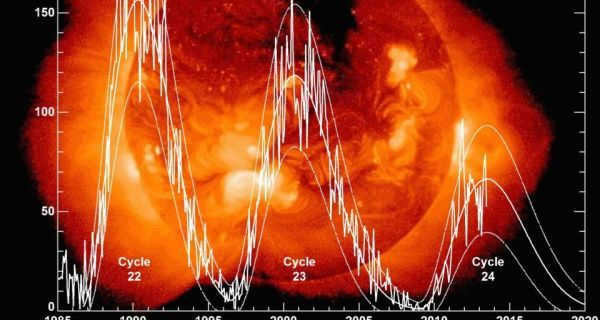
Due to alterations in the polarity of the global field, the solar cycle undergoes changes, resulting in the formation of sunspots. The Wolf number serves as an indicator to measure the number of these spots. It is determined solely on the visible side of the star and can be utilized to gauge its level of activity.
The duration of the cycles typically lasts around 11 years, although the actual timeframe can vary from 7 to 17 years. The cycle with its peak in 1761 is considered the first, and subsequent cycles are numbered accordingly. The current cycle commenced in 2019 and is the 25th in the sequence. It is worth noting that the Sun’s life cycle most likely began long before researchers began studying it.
Since time immemorial, humans have sought to comprehend the nature of the Sun and its origins. Our ancestors revered it as the deity of illumination. Initially, astronomers regarded the Sun as a celestial body akin to the Moon, unaware of its true location and significance. In fact, the days of the week were named in homage to this celestial entity, such as Sunday, which signifies “the day of the Sun”.
The Chinese were the first to observe sunspots, an occurrence dating back to 800 BC. Centuries earlier, A. Samosky postulated that it is not the Sun that revolves around our planet, but rather the other way around. This notion gained widespread acceptance during the era of Galileo. The invention of the telescope enabled astronomers to discern that these spots are integral to a rotating star.
In the 17th century, scientists were able to calculate the distance to the Sun. By the 19th century, they had also determined its chemical composition and speculated on its structure. It wasn’t until the discovery of nuclear reactions that the true nature of the Sun’s energy production as a star became clear.
A significant breakthrough occurred when humans started exploring space and gained a better understanding of the solar wind. By observing the Sun from space, scientists were able to confirm its structure.
Fascinating information about the Sun
- Objects that emit heat possess a specific power indicator. In the case of humans, it is significantly higher than that of the Sun. This implies that the immense amount of heat emitted by the Sun is a direct result of its enormous volume.
- The most intense magnetic storm occurred in 1859, during which the northern lights were visible even over Cuba, and telegraphic communication across the entire Earth was disrupted.
- We have already examined one theory regarding the origin of the Sun. However, the question remains: where did the cloud come from? Scientists theorize that it is composed of remnants from previous stars, indicating that our star is not the initial generation of celestial bodies.
A video captured by the “Parker” spacecraft at the shortest distance achievable.
Origin and Age of the Sun
Alongside the aforementioned hypothesis, there exists an alternate narrative surrounding the Sun. It is possible that the celestial body underwent a remarkable journey, evolving from a comet located at the outskirts of the Galaxy to its current state as a yellow dwarf. The accumulation of mass and subsequent increase in gravitational force may have triggered thermonuclear reactions.
One aspect that scientists concur on is that the Sun has surpassed the age of 4 billion years.
Until the 20th century, theories about the origin of light were significantly disconnected from reality, until the emergence of the concept of nuclear reactions. E. Rutherford and A. Eddington’s research has contributed to the development of a theory that suggests the conversion of hydrogen into helium, accompanied by the emission of photons. This process is what we perceive as luminosity.
A celestial event known as a solar eclipse
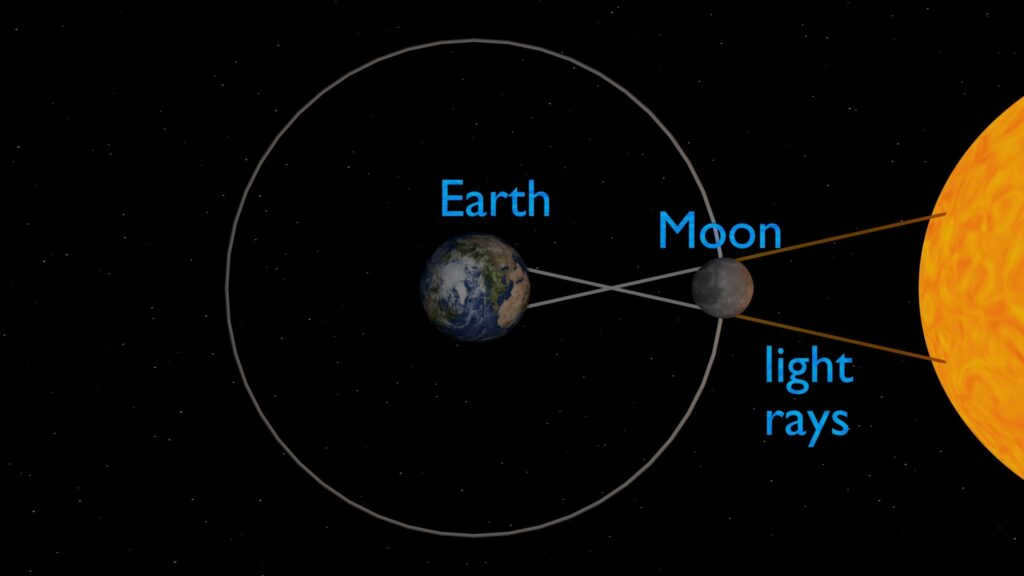
The phenomenon of an eclipse, which used to instill fear in ancient civilizations, can now be easily understood and explained. It occurs when the Moon obstructs the Sun’s path during a new moon phase. Eclipses come in different forms, including partial, total, and annular. In the case of an annular eclipse, the Moon does not completely block the Sun, creating a distinctive ring-shaped appearance.
The worship of the Sun was prevalent in the mythologies of various cultures. It was revered, celebrated, and offered sacrifices to. It represented wealth and power, and was considered the highest deity. The Sun was the subject of stories, myths, paintings, songs, and prayers in every corner of the globe.
It was believed that the first rulers of the world were descendants of the Sun. People feared the Sun’s anger, often interpreting eclipses as its manifestation. In Greek mythology, there was a tale of Phaeton, the son of the Sun God. In the Americas, sacrifices were made to gain favor from the solar deity.
Even today, concerns about the Sun persist. We are sometimes afraid that the Sun, as a star, might suddenly extinguish or that its surface spots will grow and consume it.

Evolution and the future
As the Sun’s brightness intensifies, the Earth’s temperature will also rise. In approximately 3.5 billion years, the Sun’s brightness will surge by 40%, resulting in Earth transforming into a Venus-like planet. Concurrently, Mars will experience a significant increase in temperature, making it a viable habitat. Essentially, planets located farther from the Sun will become habitable.
As the hydrogen is depleted, the core of the star will contract while the star itself will expand. Eventually, all the hydrogen will be exhausted. As the temperature increases, the burning process will shift from the core to the shell (the layers of the Sun’s atmosphere) of the star, causing it to shrink by approximately one third. As a result, the Earth will move into a more distant orbit. This cycle will continue for 10 million years, during which the Sun will be classified as a red giant.
Following a helium flash event, the radius of the star will decrease to 10 times its current size. After 110 million years of helium depletion, the Sun will once again expand and become a red giant.
The Sun’s outer layers will eventually expand and form a nebula, while its core will transform into a white dwarf, gradually cooling down. With the absence of thermonuclear reactions, the white dwarf will eventually turn into a black dwarf. In theory, at this point, it may even be conceivable to land on the Sun, as its temperature will have significantly decreased. Thus, the Sun’s evolution will reach its conclusion.
A representation of the Sun’s surface
The Sun’s surface is not uniform in terms of composition and brightness. There are variations in size, with some spots being larger than the Earth’s diameter. Additionally, there are three distinct types of zones on the star:
- Granules, which are visible from Earth;
- Supergranules, enormous objects (approximately 35,000 kilometers) surrounding the star’s surface;
- Faculae, areas of heightened brightness.
The Sun is responsible for providing the necessary conditions for life on our planet, but it also possesses the power to annihilate all living organisms.





